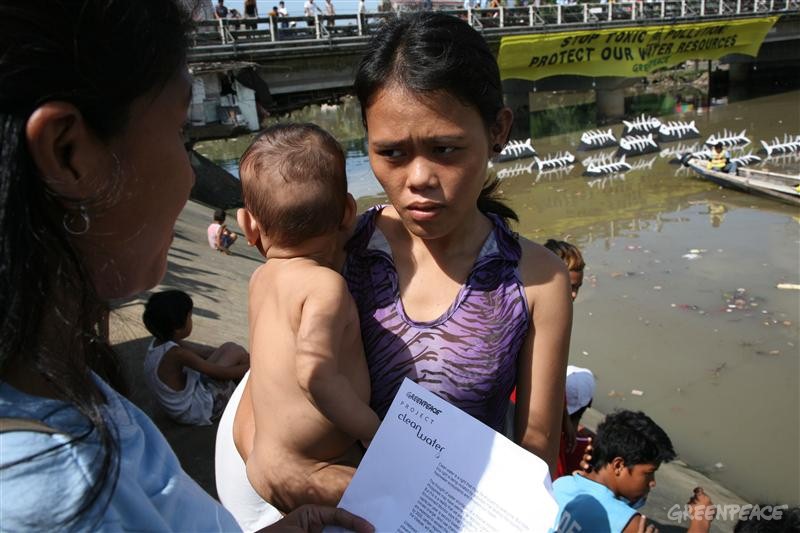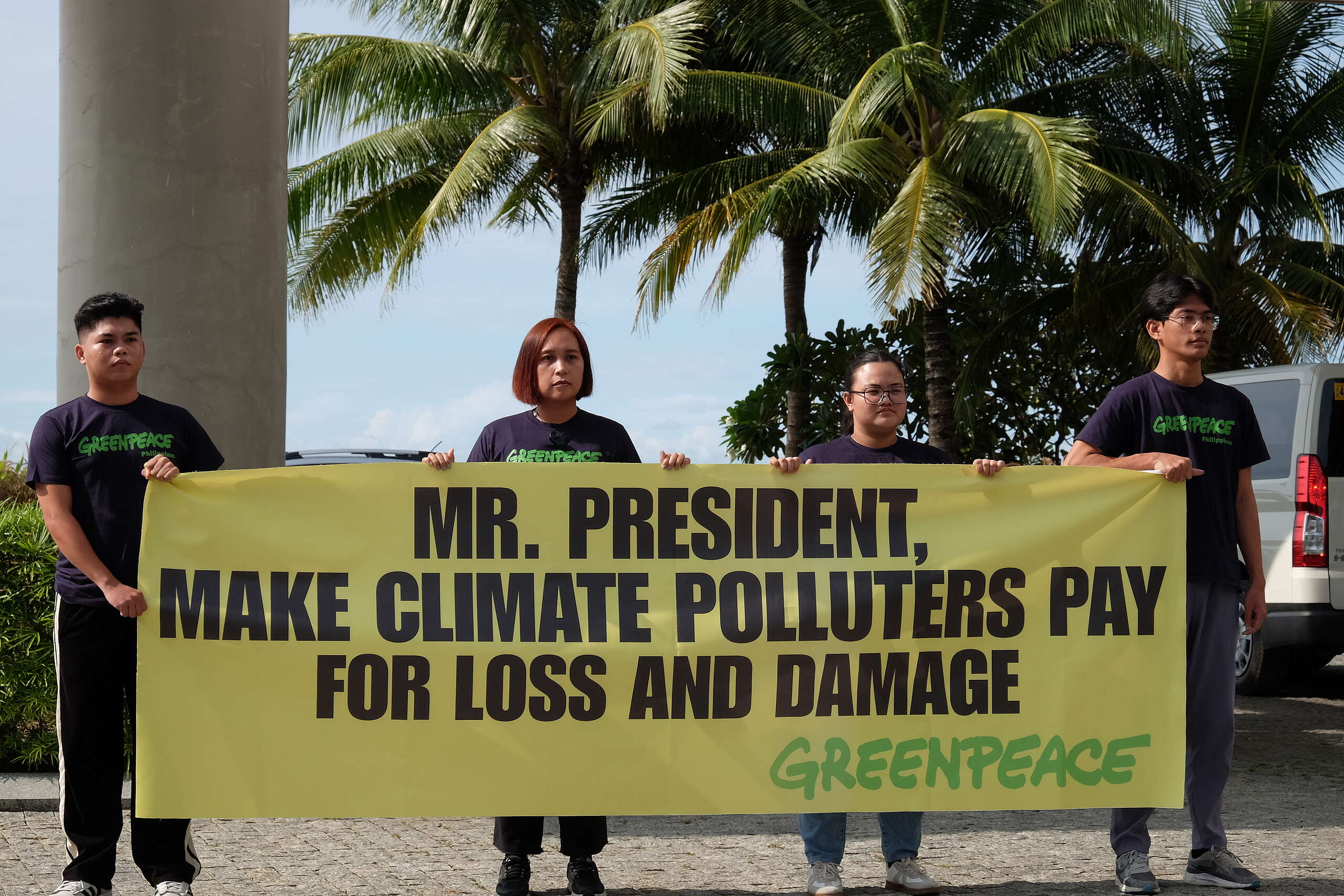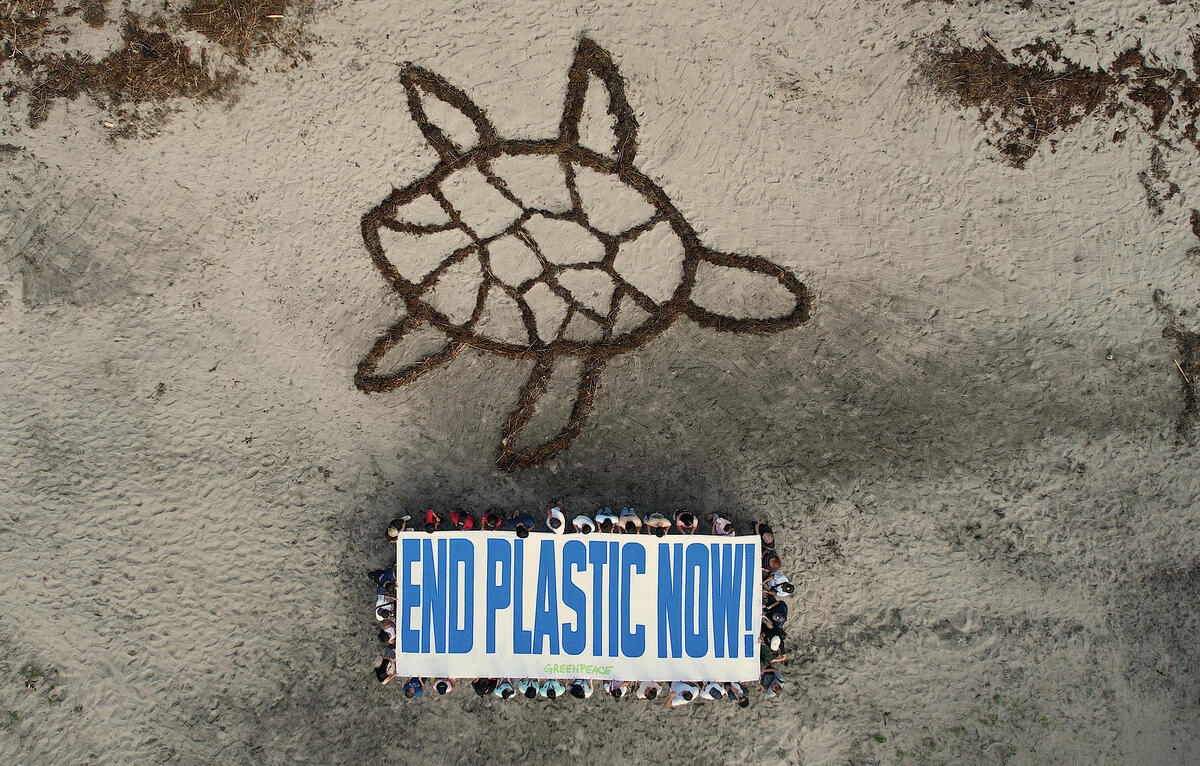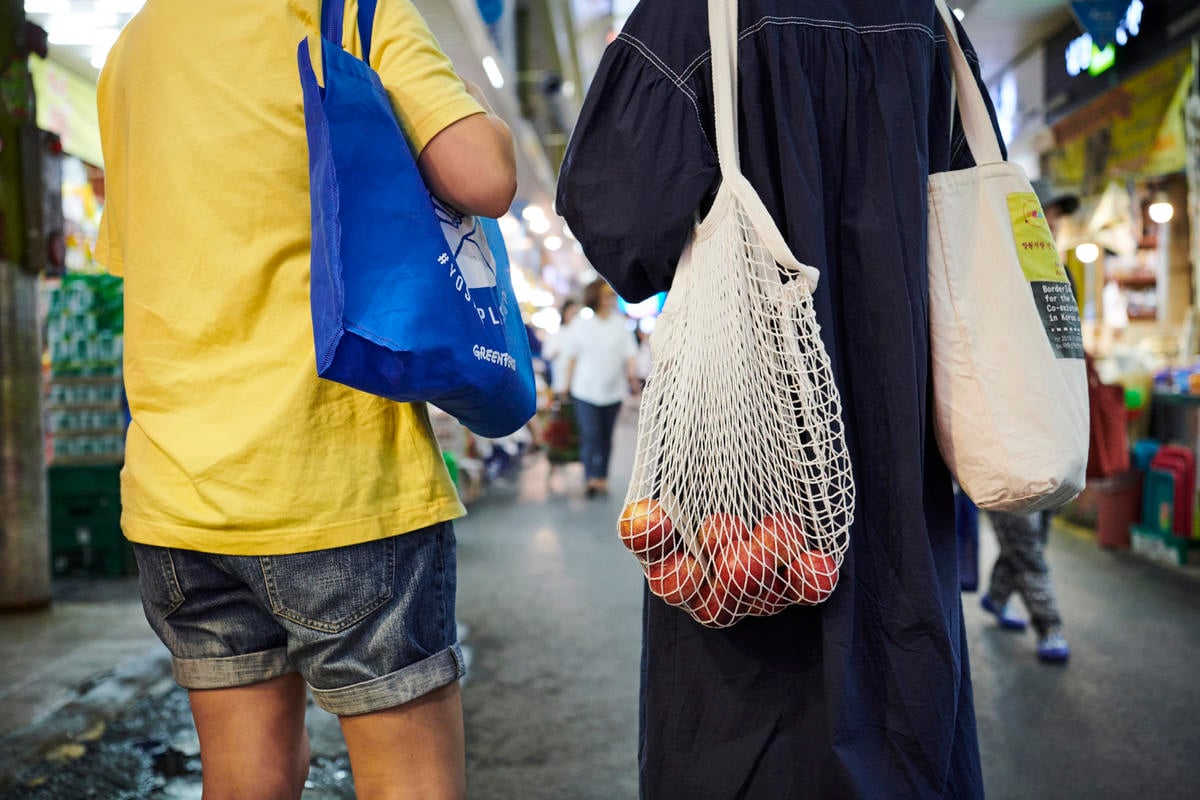 Through case studies from various countries, the report shows how toxic industrial effluents have dire impacts on freshwater bodies, and people. But because these chemicals are hidden or invisible, efforts to control them once they have been discharged have not been effective. Greenpeace is calling on the Philippine government to learn from the lessons of developed countries and immediately institute policies to protect the country’s precious freshwater resources from industrial pollution.
Through case studies from various countries, the report shows how toxic industrial effluents have dire impacts on freshwater bodies, and people. But because these chemicals are hidden or invisible, efforts to control them once they have been discharged have not been effective. Greenpeace is calling on the Philippine government to learn from the lessons of developed countries and immediately institute policies to protect the country’s precious freshwater resources from industrial pollution.
“This report debunks the short-sighted and negative mentality that ‘pollution is the price to pay for progress.’ Experiences from everywhere around the world show that industrial water pollution have translated to huge economic, human and environmental costs. Greenpeace aims to show that there is a better way: an effective pollution prevention policy is the win-win solution,” said Beau Baconguis, Toxics Campaigner of Greenpeace Southeast Asia.
‘Hidden Consequences’ draws attention to the financial, social and environmental costs of industrial water pollution, showcasing the problems of long-term contamination from hazardous chemicals across several locations in the ‘Global North’ (2), including the Hudson River, the Dutch Delta, the Laborec River and the ‘Swiss Toxic Dumps’ (3).
The report illustrates how rivers in the ‘Global South’: the Yangtze in China, the Chao Phraya in Thailand, the Neva in Russia and the Marilao in the Philippines, dotted by numerous factories and industrial buildings along the length of its banks, are now facing the same situation. The said rivers supply drinking, domestic and agriculture water to the populations of large rural areas, as well as to the inhabitants of big cities such as Shanghai, Bangkok and St.Petersburg.
“The impacts of water pollution on human health, the environment and local economies are rarely considered or compensated, not just because they are hard to calculate, but because of the difficulty in tracking down the polluters and holding them responsible for the cost of cleaning up the pollution. Instead, it is the taxpayer who too often ends up paying the bill,” said Baconguis.
“Our government has a choice. Should they expose their citizens and the environment to hazardous toxic pollution, and condemn future generations to pay for the management of contaminated sediments, whose full and final costs are incalculable? Or should they instead commit to a ‘Toxic-Free Future’, and take precautionary action to support truly sustainable innovation, and progressively eliminate the use and release of hazardous substances down to ‘zero discharge’?” added Baconguis.
Greenpeace is calling on governments and corporations to commit to a Toxic-Free Future by taking urgent, precautionary and transparent action to eliminate the use and releases of all hazardous substances.
Preventive measures of water pollution are urgently needed in the Philippines. The government should:
– set up a proper pollutant disclosure system through which the public could easily access a wide range of pollution data;
– immediately establish a list of hazardous chemicals for priority elimination action; and
– create an action plan with clear timelines to reduce, restrict and ultimately zero the discharges of toxic chemicals.
——————–
Download Hidden Consequences and related materials:
Hidden Consequences Report (Full text and Executive Summary)
Hidden Consequences Digital Magazine
Contacts:
Martin Hojsik, Toxic Water Campaign Coordinator, Greenpeace International, +421 905 313 395
Tommy Crawford, Communications Manager, Greenpeace International, +31 62 700 00 60
Beau Baconguis, Toxics Campaigner, Greenpeace Southeast Asia , +63917 8715257, (632) 4146512. loc 119 [email protected]
JP Agcaoili, Media Campaigner, Greenpeace Southeast Asia , +63917 6312750, (632) 4146512 loc 121, [email protected]
Those images featured in the report, as well as a series of especially commissioned photographs to celebrate the launch of the report, are available here. Please contact:
Greenpeace International Picture Desk, +31 62 900 11 52
Notes to the Editor:
- The term ‘Global South’ is used to describe developing and emerging countries, including those facing the challenges of often rapid industrial development or industrial restructuring; such as Russia. Most of the Global South is located in South and Central America, Asia and Africa. Within this report this term refers specifically to case studies located within a group of countries including: China, Thailand, The Philippines and Russia.
- The term ‘Global North’ is used for developed countries, predominantly located in North America and Europe with high human development; according to the United Nations Human Development Index. Most, but not all, of these countries are located in the Northern Hemisphere. Within this report this term refers specifically to case studies located within a group of countries including: The United State of America, Switzerland, The Netherlands and Slovakia.
- See Hidden Consequences Report, page 30.




Discussion
How about starting the river/water remediation to make it potable again?